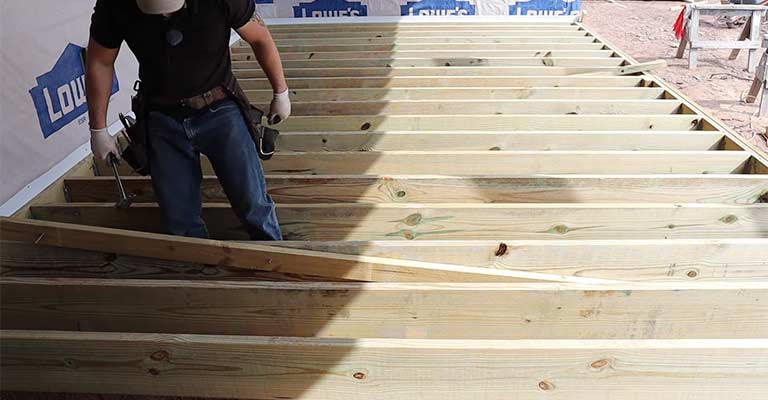The span of a double 2×6 beam without support depends on various factors, including the type of wood, the grade of the lumber, the spacing between the beams, and the load the beam will bear.
When using Douglas fir 2×6 floor joists, they are suitable for spans of 10 feet or less. Although somewhat unconventional, it can be acceptable in specific situations where the house design permits.
According to building codes, the allowable range for 2×6 spans is typically between 2 feet 1 inch and 20 feet 8 inches. It’s worth noting that ceiling joists, having fewer live load considerations, can span even farther.
For example, if the joists have a 12-foot span, are spaced 12 inches on center, and are supported by a ledger on one side and a beam on the opposite side, this configuration should align with standard structural guidelines.
Additionally, local building codes and regulations may dictate specific requirements for structural elements.
For a rough estimate, you can use span tables provided by building codes or engineering standards. These tables consider factors such as the species and grade of wood, the spacing of the beams, and the intended load.
This article will explore the span capabilities of double 2×6, 2×8, 2×10, and 2×12 beams, shedding light on their applications in floor joists, deck beams, ceiling joists, pitch roof rafters, flat roof rafters, purlins, and binders.
Types of Deck Beams
Deck beams, crucial for providing structural support to floor joists, come in different depths, including 2×6, 2×8, 2×10, and 2×12.
The choice of wood species (such as southern yellow pine and Douglas fir) and grade (grade 1, grade 2, grade 3) influences their strength and span capabilities.
Understanding Double Beams
A double beam is formed by nailing together two beams of the same size. For instance, a double 2×6 consists of two 2×6 beams joined, offering increased load-bearing capacity.
Role of Deck Beams and Joists
Deck beams play a crucial role in transferring the load of the subfloor, floor finishes, and live loads (people, furniture) to walls, headers, or foundation walls.
They essentially serve as the skeletal framework of a building. Joists, technically smaller beams, support shorter spans and are made of materials like wood, steel, or engineered lumber.
Determining Beam Spans
The span of a double beam depends on its depth and the load it needs to bear. A general guideline is that a double ply beam can support a span in feet equal to its nominal width in inches.
For example, a double 2×12 beam can span 12 feet, and a double 2×10 can span 10 feet.
Specifics for Each Size
Double 2×6 Beam:
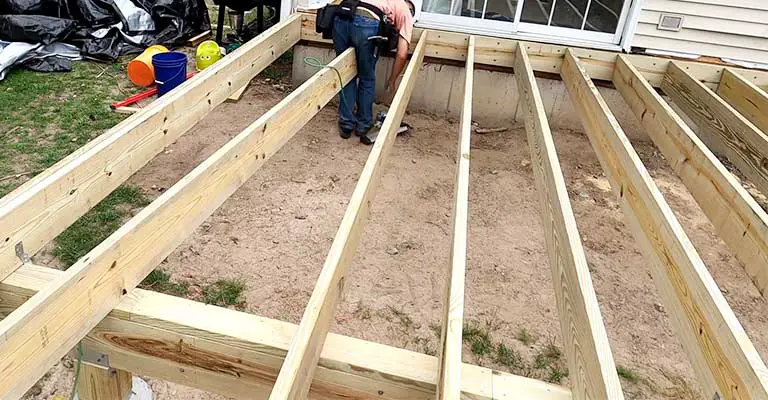
As a rule of thumb, a #2 grade southern pine double 2×6 deck beam can span up to 6 feet with a total load of 50 psf (40 psf live load + 10 psf dead load) and a deflection limit of L/360.
Double 2×8 Beam:
A #2 grade southern pine double 2×8 deck beam can span up to 8 feet under similar conditions.
Double 2×10 Beam:
The span of a #2 grade southern pine double 2×10 deck beam reaches up to 10 feet with a total load of 50 psf and a deflection limit of L/360.
Double 2×12 Beam:
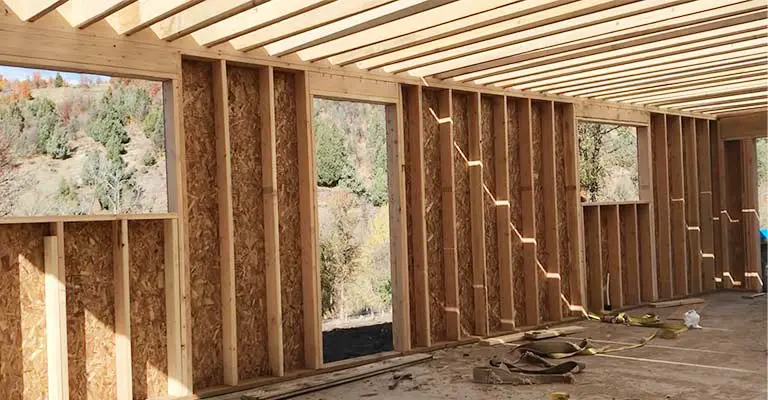
For a #2 grade southern pine double 2×12 deck beam, the span can extend up to 12 feet, meeting the same load and deflection criteria.
What Is The Maximum Weight A 2×6 Can Support?
The overall weight-bearing capacity depends on factors like the member’s orientation, location, load distribution, and loading duration.
Orientation plays a crucial role in determining load-bearing capacity, whether the 2×6 is positioned vertically, horizontally, diagonally, or with a flat surface facing up or on the edge.
Load application point and load distribution are essential considerations in assessing a 2×6’s load-bearing capacity. The duration of the load is a significant factor influencing the final span length of a 2×6.
A vertically positioned 2×6 can withstand up to 7000 pounds without buckling.
When placed horizontally on the edge, a 2×6 is estimated to carry approximately 500 pounds over a 10-foot span with a load distribution of 10psf dead load and 40psf live load.
Various configurations of 2×6 members are outlined in the code, specifying the total loads each configuration can support.
What Influences The Maximum Span Of A 2×6?
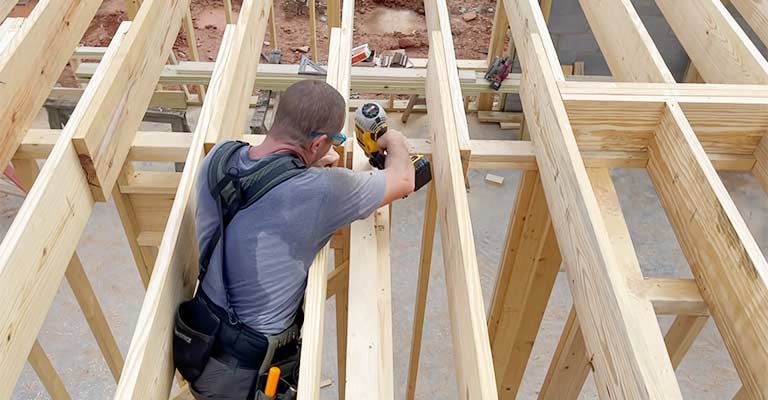
The actual span distance achievable by a 2×6 is influenced by a variety of factors, including the wood species, grade, member location, applied loads, and the spacing between the members.
The Impact of Member Spacing on 2×6 Span Lengths
The distance between adjacent 2×6 members, known as spacing, plays a crucial role in determining the span lengths of these members, significantly affecting their overall performance.
Spacing Considerations for 2×6 Floor Joists
For a grade #1 Hem-fir 2×6 floor joist, a span of 11′-7″ is achievable with 12″ spacing under a total load of 30psf.
However, increasing the spacing to 16″ reduces the span to only 10′-6″, illustrating the direct correlation between spacing and achievable span lengths.
Location’s Influence on 2×6 Span Lengths
The positioning of 2×6 members within a frame directly impacts their span lengths. For instance, the spans in a bedroom may exceed those in a living room due to the difference in occupancy, with bedrooms typically accommodating fewer people at any given time.
Load Effects on 2×6 Span Distances
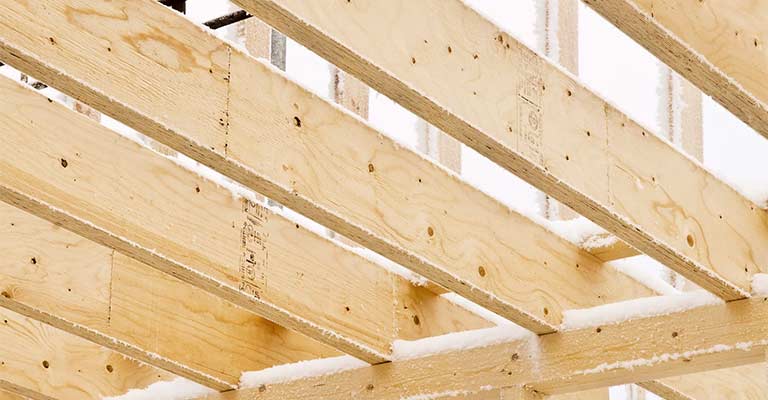
The span lengths of 2×6 members decrease as the total loads acting on them increase. A grade #2 Douglas fir-larch 2×6 floor joist demonstrates this, spanning 11′-10″ under a 10psf dead load and 30psf live load, but reducing to 11′-8″ under a 20psf dead load and a 30psf live load.
Understanding the Impact of Wood Grade on 2×6 Span Lengths
The grade of wood used significantly influences the span lengths of 2×6 members. Wood grades provide information about defects, strength, deflection, capacity, and load-bearing capabilities.
The IRC 2021 code recognizes four grades, with SS-grade lumber offering the highest quality and longest span.
Varied Grades and Their Impact on 2×6 Span Capacities
Wood grades, denoting the degree of defects in structural members, play a vital role in determining the span lengths of 2×6 members.
The IRC 2021 code categorizes four grades, with SS-grade lumber boasting superior quality and longer spans, while #1 and #2 grades, despite having more defects, are commonly used.
Out of these grades, #2 is the most widely employed in wood construction.
How Far Can A 2×6 Member Span?
The applications of a 2×6 joist are diverse, suitable for use in floors, roofs, ceilings, walls, and various frames in construction.
Each member possesses its designated span length, as outlined in both local and international codes like the IRC 2021. It’s advisable to consider local codes due to the localized nature of available structures.
As a general rule of thumb, a trial joist length is typically 1-1/2 times the depth of the board in feet.
The span range for 2×6 joists, as per codes, varies from 2’-1” to 20’-8”. Notably, ceiling joists may have extended spans due to the absence of live loads.
How Far Can A 2×6 Header Beam Span?
Header beams, a specialized type used over windows and door openings in a wall frame, play a crucial role in carrying and transferring loads. The span of a header beam is influenced by its location and the load it must bear.
Requirements for header beam spans differ between interior and exterior walls, affected by factors such as building width, total stories, floor conditions, and superimposed dead load like snow.
The header span tends to decrease as the building width and number of floors increase.
How Far Can A 2×6 Deck Beam Span?
Deck beams, supported by posts, carry loads from joists, and their spans are influenced by wood species, grade, loads, and spacing, in addition to joist spans.
For a grade #2 Southern pine beam of size 2×6, with 6’ joist spans, and a live load of 40psf and dead load of 10psf, the span is approximately 4’-11”.
Under the same conditions, a double beam spans around 6’-11”, while a triple beam spans the longest at 8’-2”. Increasing joist spans results in a decrease in beam span.
For other 2×6 wood species under similar conditions, the average double beam span is approximately 5’-5”, and for triple beams, it is around 7’-4”.
How Far Can 2×6 Decks Span?
Decking, the platform placed atop joists for walking and placing furniture, varies between interior and exterior decks.
Interior deck joists are typically made of plywood or oriented strand board (OSB), while exterior decks often use 2×6 lumber or 5/4×6 lumber members. The 2×6 joists, with greater thickness compared to 5/4×6 ones, offer increased strength.
The IRC code provides detailed guidelines for decking, including span details for 2×6 joists under a 40psf live load and a 10psf dead load.
Common wood species, such as Southern pine, Douglas fir-larch, and Red pine, are used for decking. For a 2×6 joist, Southern pine spans the longest at 9’-11”.
Interior decking spans are generally larger than exterior decking spans under the same loading and spacing conditions, with a grade #2 Southern pine spanning approximately 10’-3”.
The IRC also outlines the maximum cantilever length allowed for specific members, with a 2×6 Southern pine having a maximum cantilever span of about 1’-3” for 12” spacing, 1’-4” for 16” spacing, and 1’-6” for 24” spacing.
Conclusion
Understanding the span capabilities of double deck beams is crucial for designing and constructing structurally sound and safe residential spaces.
Always consider local building codes and consult with professionals for precise guidance in your specific construction project.

